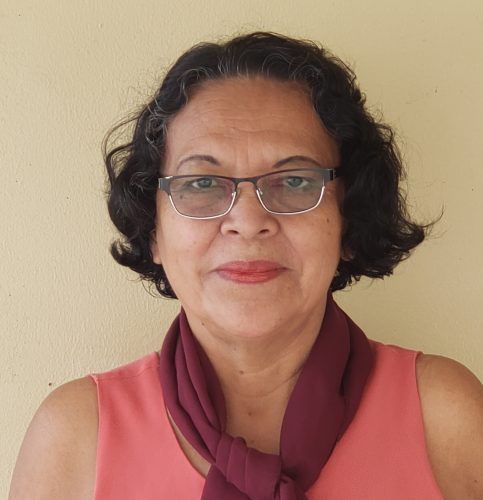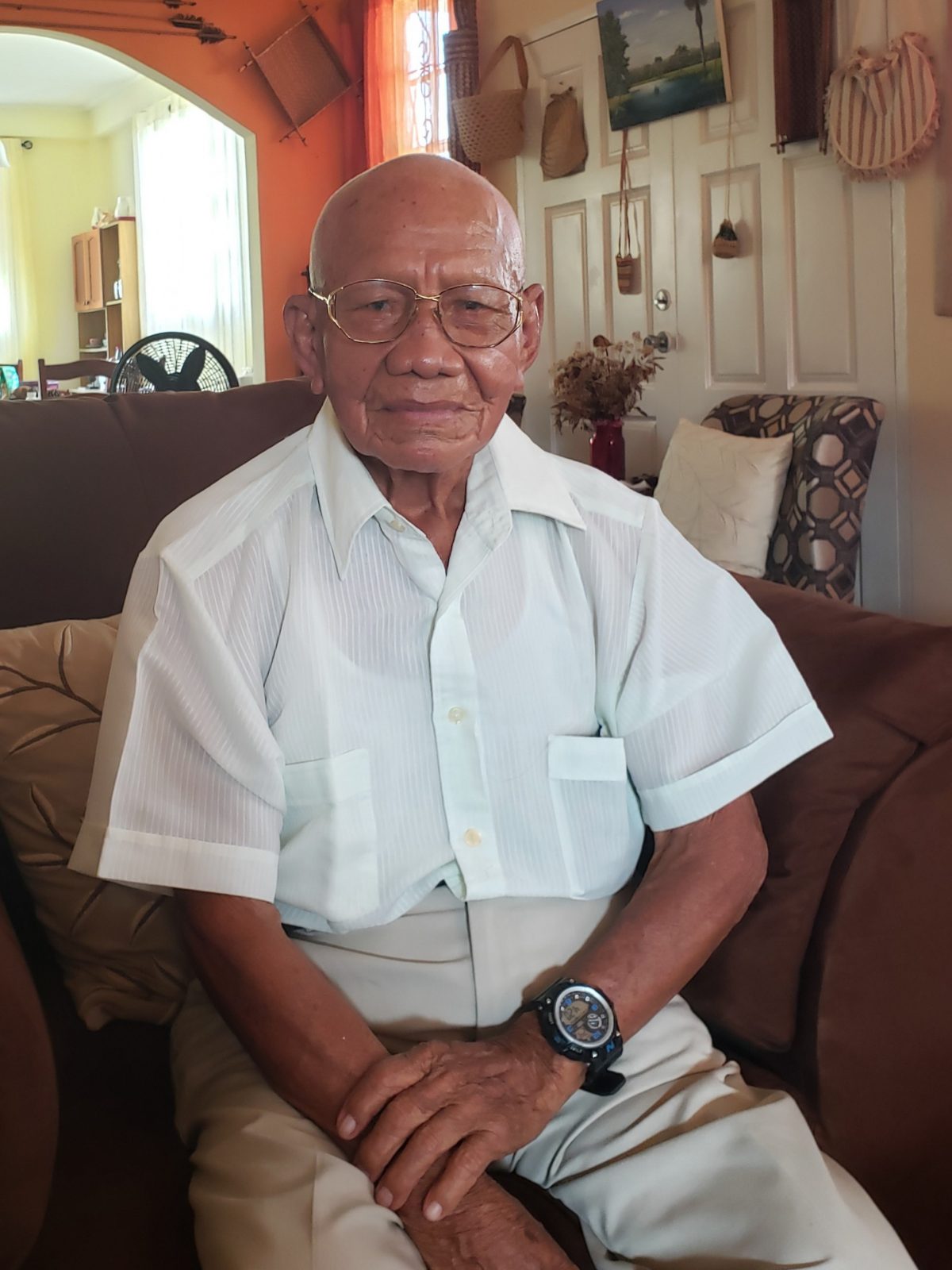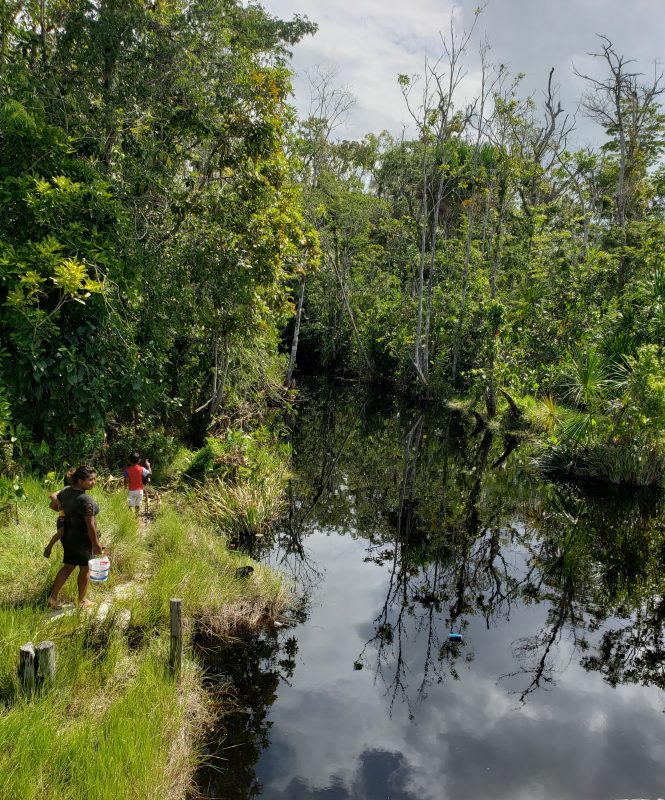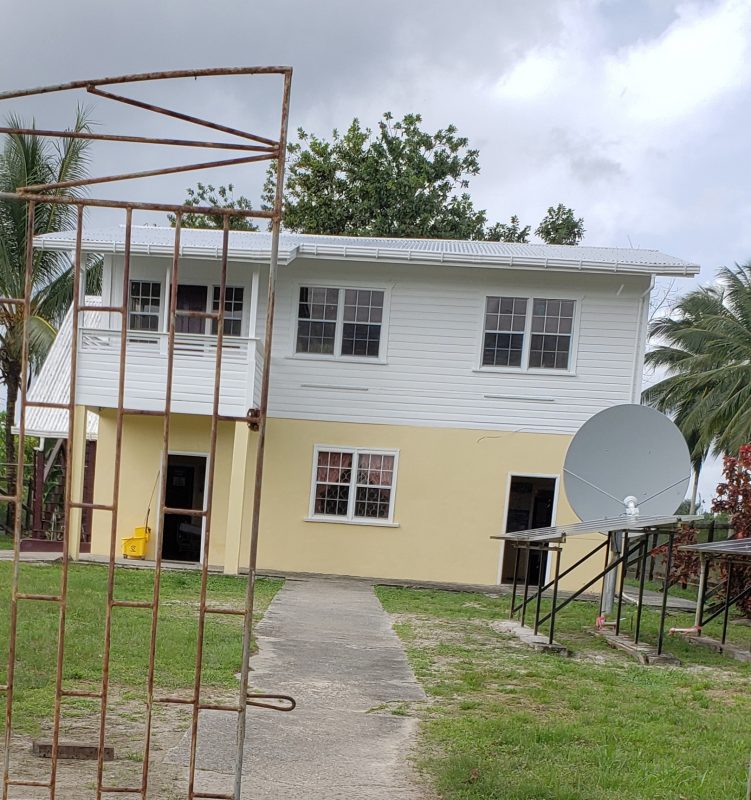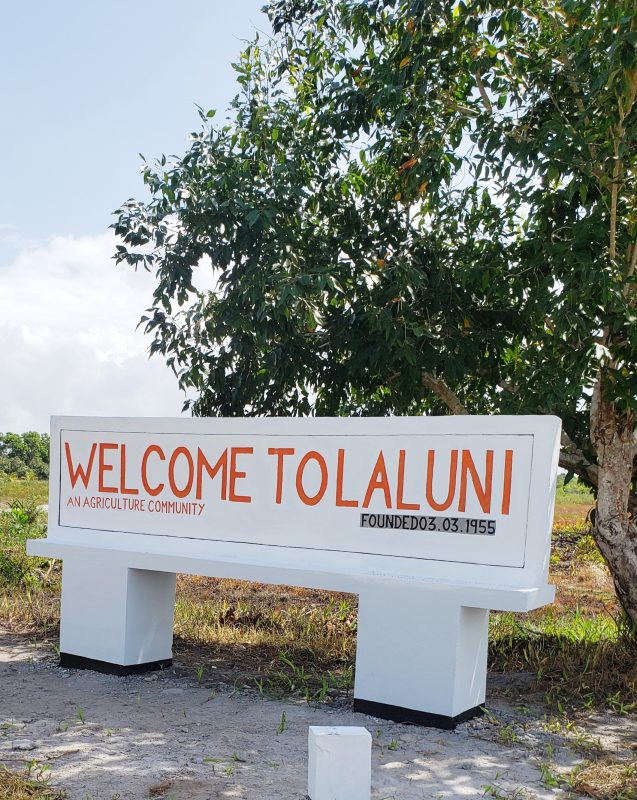A former tobacco and cash crop farmer, carpenter and fisherman, 90-year-old Leonard Bartholomew Torres has been at the heart of the development of the village of Laluni and seeing its transformation from dense forests to a thriving agricultural community. Laluni is seven miles from Kuru Kururu on the Linden-Soesdyke Highway.
At present, the oldest resident in his community, Torres was one of ten tobacco farmers who in the early 1970s was allotted lands along the forested Laluni Creek that they had to cut down and clear to cultivate tobacco for the Demerara Tobacco Company (Demtoco).
Unintentionally, he is the only former tobacco farmer from Santa Rosa, Moruca, Region One (Barima/Waini) who has remained in Laluni and made the place his home. “My wife and I never intended to make this place our home. It was supposed to be temporary,” he said during a recent interview at Laluni.
Relating his story and the integral role he played in the development of the community while being in the background, the unassuming Torres said, “In 1972, I was recruited by a man name Leonard Schwartz from the Demtoco. I was one of five farmers who he had been attempting to recruit from Moruca to cultivate tobacco in Laluni.
“Schwartz worked in the North West District as an agricultural officer in the 1960s so he knew the good farmers. He chose myself, Rupert Domingo, Elario Atkinson and another Atkinson man from Moruca. In the end it was just the four of us he chose. However, one other person was chosen from elsewhere. We said, we will go to see the place.”
On arrival, they found no houses but a big building they called “The Centre,” where they stayed for three months until they built their own camps. “Real lil’ camps. There were already five farmers in the process of planting tobacco. Most of the place was high bush.”
Prior to journeying to Laluni, Torres, who was born at Santa Rosa on 11th October, 1930, and educated at the Santa Rosa Roman Catholic School, had sought his fortunes out of Santa Rosa as most young men of the day did.
“I tried my luck in diamond mining in Kopinang, Orinduik and Monkey Moun-tain in Region Eight (Potaro/Siparuni). The man I worked with ‘scamped’ me, so left him and returned home.”
At San Jose on the Santa Rosa Island proper, Torres had built a new house where he lived with his wife Dolores and their two young children, Pauline Sukhai and Sylvester Torres, who they had at the time. Torres is the stepfather of Sukhai, Minister of Amerindian Affairs and father of Sylvester and Sarah Torres.
“I had a plot of land at Four Miles on the Kumaka/Kwebanna Road where I farmed cassava and other ground provisions. I also worked as a carpenter with Noel Atkinson (who was well known for his carpentry skills but now deceased) who would get the jobs. I went to the sea with some fishermen who would give us the fish they would not sell. I had no steady job to bring in money.”
So when Schwartz presented him with the opportunity to do tobacco farming in Laluni, Torres said, “I had to make a decision. At the time I had a young family. I was 36 years old when I married, basically an old man. Roseanne (Pauline) was about nine years and Sylvester was four when they joined me at Laluni. My last daughter, Sarah, was born in Georgetown while we were living at Laluni, so she is a real Laluni girl.”
The other farmers from Santa Rosa did not stay at Laluni. They returned to their homes as they could not cope with the conditions while some missed their families who did not join them.
Asked how he uprooted his family from Santa Rosa, Torres said, “I spoke with my wife. She advised me to come and see the place. I came alone. I saw. The four of us who came decided to start planting immediately. I did not return. I wrote to my wife and told her of my plans. She decided to join me to see the place. She came and stayed with us. She liked what she saw. She said it was going to be temporary but it was for forever. She was brave and a real pioneer.”
His wife has since died and her remains are buried at the cemetery in Kuru Kururu.
Torres said that seeing his children grow up in a very close-knit Laluni and seeing the community develop before his eyes has bonded him to the community in such a way that he does not miss Moruca.
“I have no regrets leaving Moruca. Everybody in Laluni is like one big family. Everybody know everybody. In Moruca, it is big. Anything happen here, everyone comes together to help. That is the beauty of Laluni.”
However, he visits Santa Rosa whenever he gets the chance because of his love for the place and his two surviving brothers who still live there. Torres is the second of the ten siblings, four of whom have since died. He is the eldest of the remaining six.
Because of his move to Laluni he said he has been able to help other family members and a few people from Moruca to get on their feet. Had he remained in Moruca, he might not have been able to do that.
Farming Tobacco
Torres and the other farmers had to undertake some crash courses to learn how to plant tobacco. They were taught how to prepare the nursery, how to sow the seeds, and how to plant the seeds in five long beds, which were 60 feet long and four feet wide.
“The seeds were very small and we put them in a spray can with water, then walk very quickly or run across the length of the bed pouring the water with the seeds. We would repeat this process till all the seeds were sown and all five beds were planted. The seeds had to be watered three times a day to enable germination within two weeks. That was only the nursery. We still had to transplant.”
Torres had to learn good crop husbandry and farm management quickly. “I could not do the work by myself. I had to employ about four to six people in addition to my wife to do the work. Some tobacco farmers employed more people depending on the size of the land they had planted. I had to employ people to plant, to fertilise, to spray, to remove suckers and flowers that take away nutrients from the tobacco leaves, and to harvest.
“One man could not do all the work. So I built a little place for about three people and would hire people from Moruca or from within Laluni. As farmers we would also work on other farms when they needed help. Even my children and other children from the community would help out with the light work.”
Recalling the physical state that Laluni was in when he arrived, Torres said, “Everywhere was bush. Alongside the road where you now see fat pork and chicken farms was high bush. We had to clear the land where we planted. I was given ten acres but I only planted three acres at a time.”
The five farmers who were planting at Laluni when Torres and the others arrived in Laluni were from St Cuthbert’s Mission and Moraikobai.
The first people to settle in Laluni were of the Lokono (Arawak) nation. Today Laluni is a mixed community of descendants of Amerindians, Africans and East Indians. Torres is of the Lokono nation.
Among the first five families to settle in Laluni was hunter and fisherman Wilfred Henry and his family. Henry and his family of Amerindian descent were the first family to settle in Laluni in 1955. He is celebrated as the founder of Laluni and a plaque has been placed in the community centre ground in his honour. When the British/American Tobacco Company, the predecessor to Demtoco went to Laluni to open the land for tobacco cultivation they found Henry and his family living there.
“They employed him. He used to hunt in nearby Kakabura then he settled in Laluni where the land is very fertile. Henry’s grandchildren and great grandchildren still live in Laluni.”
There was no school and the children of the first five families had no choice but to go to school at St Cuthbert’s Mission through a track that linked the two communities aback of section Number Four. “It was a half day walk, so you can imagine what happened.” Laluni is divided into four sections with the earliest section being Number One where the first five families lived. Torres lives in Number Two. The newer sections are Numbers Three and Four.
With the arrival of the second set of farmers, some with families that included children there was need for some formal education. “There was a man called Sir Inniss. He was the first teacher at Laluni. He taught in a flat building that was available at the time. Roseanne would have benefited from his teaching,”
Today, Laluni has a school with over 100 children enrolled and eight teachers.
All three of Torres’s children are well educated and are working with Government. Pauline is the Minister of Amerindian Affairs, Sylvester is working with the Ministry of Health and is in charge of the health centre at Laluni while Sarah teaches at the Laluni Nursery School.
“I am proud of my children. I am especially proud of Roseanne. She is hardworking. This is her second term in two different governments holding the position as Minister of Amerindian Affairs.”
Challenges
Asked about some of the main challenges he faced while the community underwent its transition from a forested area to a village, Torres said, initially, there was no health centre and no social services except for what Demtoco provided.
“Demtoco provided a tractor and trailer as the means of transportation in and out of Laluni. There was no shop so we had to shop in town every fortnight. Today Laluni has shops, even a rum shop. In those days, if anyone fell ill they had to be taken to Georgetown by the tractor or a land rover to Soesdyke to be transported to town.”
From travelling in the tractor trailer for over an hour over rough road, Torres was proud to note that the roadway from Kuru Kururu to Laluni has been developed to the stage where at one time getting in and out by cars took between 15 to 20 minutes. The condition of the road has deteriorated in recent years, he said, due to big trucks traversing the road. Cars now travel the road on a good day in half hour. While the roadway to Laluni needs repairs, the roads within Laluni are paved and in good condition. In the past, the white sandy roads were difficult to trudge through.
The current health centre, he said, was built from donations made by him and other tobacco farmers. “We would donate a percentage of second grade tobacco which the company would sell on our behalf and the proceeds would go towards community ventures. This was how we built the health centre. We hadn’t self-help in those days because we hadn’t time for it, but we made our contributions.”
Another major challenge Torres faced was tobacco going out of production in 1994. However, he and the other farmers were given the lands they occupied to do whatever they wanted with it. He planted cash crops along with a number of permanent crops.
Today, the community is thriving on farming – among other cash and permanent crops – citrus, cherry and pineapple while the population is growing. Almost every yard has one or several cherry trees. The population numbers over 400 at present.
In addition to cash crop farming, Torres noted, “A number of people have contracts to supply chicken to the bigger chicken production companies. Nothing is lost in the production of the chicken. Even the chicken poop is bagged off and sold as fertilizer.”
Recalling the days when there was no electricity in the village, Torres said he would go hunting and fishing to get fresh meat and fish. “I would go fishing some nights in the Laluni Creek. I had my own small boat. Sometimes, my wife would go with me during the day. We would catch a variety of fresh water fish like lowkidee, hourie, yarrow, emiree and such. So we always had a good supply of fish.”
Now in his 90s, Torres said, he eats anything that is edible. Never much of a socialiser all his life, he leads a private but active life.
“I still work and keep myself busy. I may be a bit forgetful at times but I don’t know much about resting. I think if you lay down in your old age and not be active you would get sick. Up to now you would see where I am still farming. Although Roseanne and Sarah would fret with me and ask me, ‘Why you killing yourself working?’ I would say to them, ‘I have to do it. If I sit down and do nothing, my body would cease’.”
